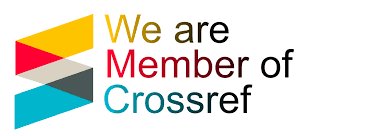ENHANCING IRRIGATED LAND USE EFFICIENCY IN SOUTHERN KAZAKHSTAN'S AGRICULTURAL SECTORS
DOI:
https://doi.org/10.63034/esr-112Keywords:
Irrigation Efficiency, Sustainable Agriculture, Water Management, Southern Kazakhstan, Precision Irrigation SystemsAbstract
This study aims to improve the efficiency of irrigated land usein the agricultural sectors of southern Kazakhstan. This region is known for its significant contribution to the nation's agricultural output. Recognizing the challenges posed by suboptimal water management practices and the increasing effects of climate change, this research takes a multidisciplinary approach to propose sustainable agricultural practices. We conducted an empirical analysis over a three-year period, comparing current irrigation techniques with the implementationa of innovative water-saving technologies. The study also evaluates the socio-economic impacts of improved irrigation practices on local farming communities. Preliminary results indicate that the use of precision irrigation systems can greatly reduce water wastage andincrease crop yields. Additionally, the research highlights the crucial role of farmer education and cooperative managementstructures in achieving sustainable water use. By combining technological advancements with community-based management,this study provides a scalable model for optimizing irrigated land use that could be replicated throughout Central Asia. The findingsaim to contribute to policy discussions on sustainable agriculture in arid regions, emphasizing the importance of tailored solutions that address both environmental and socio-economic factors.
References
Allan, T. (2003). "Water Resources in Arid Regions: Management Challenges and
Oppor- tunities." Journal of Hydrology, 318(1-4), 1-12. Barrett, H. R., & Pradhan, P. (2006).
"Irriga- tion Management in Developing Countries: Current Issues and Approaches." Agricultural
Water Management, 86(2), 102-111.
Bos, M. G., Burton, M. A., & Molden, D. J. (2005). "Irrigation and Drainage Performance Assessment: Practical Guidelines." CABI.
Conley, A., & Moench, M. (2006). "Climate Variability and Irrigation Water Policy: A
Case Study in Kazakhstan." World Development, 34(12), 2166-2181.FAO. (2011). "Improving Irrigation in Asia: Sustainable Performance of an Innovative In- tervention in Nepal." FAO Water Reports, No. 36.
Gupta, R., & van der Zaag, P. (2008). "Effi- ciency and Equity of Water Distribution
through Water Users' Associations in Various Hydrological, Operational and Institutional
Conditions." Irrigation and Drainage, 57(1), 1-
Hussain, I., & Hanjra, M. A. (2004). "Irriga- tion and Poverty Alleviation: Review of
the Em- pirical Evidence." Irrigation and Drainage, 53(1), 1-15.
Jensen, M. E., Burman, R. D., & Allen, R. G. (Eds.). (2007). "Evapotranspiration and
Irriga- tion Water Requirements: ASCE Manuals and Reports on Engineering Practice No.
" American Society of Civil Engineers.
Kijne, J. W., Barker, R., & Molden, D. (Eds.). (2003). "Water Productivity in Agriculture: Limits and Opportunities for Improvement." CABI Publishing.
Lankford, B. (2009). "Water Resource Man- agement and Irrigation Governance in
Chal- lenging Environments." Journal of Hydrology, 375(1-2), 1-12.
Molden, D. (Ed.). (2007). "Water for Food, Water for Life: A Comprehensive Assessment of Water Management in Agriculture." Earthscan/James & James.
Oweis, T., & Hachum, A. (2009). "Optimizing Irrigation Water Use in the Dry Areas
of the Middle East and North Africa." Water Re- sources Management, 23(15), 3171-3184.
Perry, C. J., & Steduto, P. (2007). "Increasing Water Productivity in Agriculture: Limits, Op- portunities, and Trade-offs." Environment and Production Technology Division
Discussion Paper, 180.
Prathapar, S. A., & Qureshi, A. S. (2007).
Published
How to Cite
Issue
Section
Categories
License
Copyright (c) 2024 Усаева А

This work is licensed under a Creative Commons Attribution 4.0 International License.





